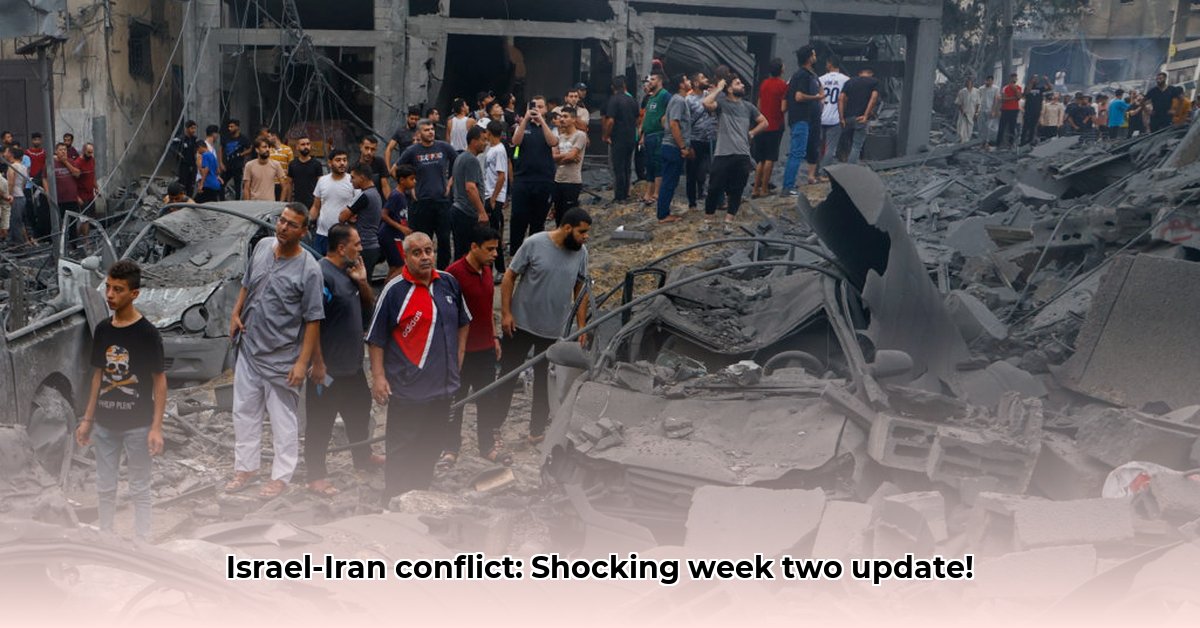
Things have quieted down a bit this week in the Israel-Iran conflict, with fewer rocket attacks from Iran. However, this doesn't necessarily signal de-escalation. The situation remains volatile and could continue for some time. This update examines both sides' actions, the potential for further escalation, and long-term strategic goals. We also explore potential pathways to de-escalation and methods for Israel to enhance its security. For more on conflict resolution, see this resource.
What's the Real Picture?
The reduction in Iranian missile attacks is positive. However, Iran's long-term intentions remain unclear. Is this a temporary pause, or are larger actions brewing? The full extent of the impact on Israeli civilians and soldiers remains unknown. Furthermore, the details of Israel's response are still emerging, adding to the complexity of understanding the current situation. How concerned should we be about the current lull in hostilities?
"The decreased missile activity doesn't equate to a resolution," says Professor Avi Shlaim, Emeritus Professor of International Relations, University of Oxford. "We need more data to assess whether this is a tactical retreat or a strategic recalibration."
Beyond a Simple Duo
This isn't simply an Israel-Iran conflict; numerous regional players are involved. Groups like Hezbollah and nations such as Saudi Arabia are integral, with the potential to dramatically shift the dynamic. The US and EU closely monitor the situation, and their actions could significantly impact the conflict's trajectory. What role will these external actors play in shaping the conflict's future?
Looking Ahead: Short-Term and Long-Term Projections
The following table summarises potential short-term and long-term scenarios for key stakeholders:
Actionable Intelligence:
| Stakeholder | Short-Term (Next Year) | Long-Term (Next Few Years) |
|---|---|---|
| Israel | Maintaining high alert; potential for targeted strikes; pursuing diplomatic solutions. | Increased defence spending; strengthening regional alliances; long-term strategic planning. |
| Iran | Addressing internal political challenges; assessing the conflict's cost; exploring diplomatic options. | Re-evaluating strategic goals; potential leadership changes; international discourse on military actions. |
| Regional Players | Managing the conflict's fallout; maintaining domestic stability; adapting to instability. | Adjusting to shifts in power; forging new alliances; renegotiating security agreements. |
| US/EU | Close monitoring; potential for increased sanctions or diplomatic pressure; providing humanitarian aid. | Promoting regional stability; preventing further escalation; addressing the conflict's global implications. |
This provides a snapshot of the key concerns and potential actions of each major stakeholder. How accurately does this table reflect the current strategic landscape?
Uncertainties Remain
Despite the reduction in missile attacks, significant uncertainties persist. More information is needed on the scale of the decrease in attacks and Israel's responses. Understanding Iran's long-term goals is crucial to assess whether this is a de-escalation or a temporary respite. Further investigation is needed for a clearer understanding. What are the most critical unknowns that could alter the course of conflict?
International Law and Morality
The conflict must be viewed through the lens of international law. The UN Security Council and other international norms will play a key role in the conflict's unfolding. Adherence to international humanitarian law is paramount and will be scrutinized closely. Will international pressure contribute to de-escalation?
The Israel-Iran conflict remains fluid. While the reduction in missile attacks is positive, high tensions persist. Maintaining vigilance and careful analysis of the evolving situation is crucial. What are the most likely scenarios for the next few months?